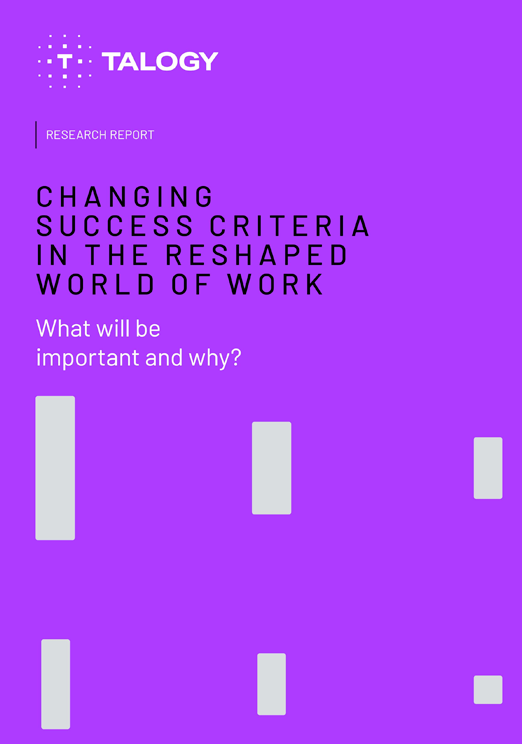Having a hard time finding qualified applicants to fill your open positions? You’re not the only one. If there were one easy, all-purpose solution to economy-driven staffing challenges, we wouldn’t be having this conversation. Short staffing in a robust economy is a problem that, at best, you try to mitigate. Mitigation does require a multi-angled approach, however.
This article doesn’t pretend to be a comprehensive answer to addressing the talent shortage. By considering these 3 tips against your current talent-acquisition methodology, though, you might think of a few ways to refine your approach and drive better candidates to your door.
Shall we?
- Thoroughly review and revise your job descriptions and postings
No one can deny that technology has changed and will continue to change the business landscape. If you work in HR and are involved in job postings, you know that IT-related positions need to be updated regularly as systems and software needs evolve. But are we digging deep enough and making sure job descriptions and job postings are intriguing to job seekers?
Prospective employees aren’t energized by reading a list of tasks they have to perform, and they are often discouraged by experience requirements that, frankly, tend toward the implausible. Like, “Must have 7 years’ experience as a Kindergarten Teacher + a master’s degree in survey design + 10 years as a Plant Manager.”
Perhaps that’s a slight (and slightly silly) exaggeration, but it’s not entirely distant from real job postings floating around out there. Maybe now is a good time to review your job postings. Do you really need ten years’ experience to be good at something? Are all the people in your company with ten years’ experience good at their jobs? Unlikely. Has anyone done a scientific study proving that three years’ experience performing a task is appreciably different from seven years’ experience?
Today’s workers are more enthused and excited about positive work cultures and opportunities to practice their talents. “Use your tech skills and creativity to help us design innovative software” is far more inviting than “Incumbent will perform coding and testing tasks, 40%.”
Think about what it takes to be successful today in the role. What motivations, interests, and personality attributes result in good performance? Lead with that.
- Implement organizational changes that improve your status as a destination employer
“You call that a tip? Are you kidding? Reinventing my entire organization is a tip?”
Okay, maybe it sounds complicated, but we’re really talking about modernizing some policies to stay abreast of cultural trends and developments.
“Old habits die hard” is a cliché for a reason. The status quo is status quo. In other words, it’s perfectly normal for an organization to do things a certain way because it has always done them that way, and human nature drives people to reflexively distrust that which is new and different. But we’re trying to fix a problem here, and sometimes we have to start with ourselves and work our way out.
There are still many organizations without a realistic work-from-home policy, for example. Managers still—incorrectly—assume people who work from home are goofing off. The same goes for flexible hours. Younger employees want more flexibility and to let technology work for them to improve their employment experience. The business world is irrevocably moving toward a more flexible, virtual work environment, and organizations hoping to attract and keep talent must adapt.
A lot of companies still maintain the strictly hierarchical organizational structure of decades past as well, which tends to result in an environment that is formal and restrictive. In other words, an environment that might not appeal to workers who seek a flatter, more empowering structure that fosters engagement and creativity. Sure, suggesting that someone change an ingrained organizational culture is a bit beyond the scope of a “tip,” but it may serve to inspire some thought and reflection about the image employers are presenting to prospective candidates.
- Stop looking in the same places for talent
The biggest block a lot of hiring managers have in looking for talent is their own ingrained tendency to overemphasize past experience. Many of them believe industry knowledge outweighs other factors and worry that inexperienced candidates can’t be taught.
Less experienced people can be taught, in fact. They’re smarter than many managers think, and they may even bring some fresh ideas from an outsider’s perspective. You know what you really can’t teach? Intrinsic motivation.
Intrinsic motivation is a stronger predictor of performance than past experience. Every department has a story about that one person who “got it” right away and within six weeks was showing the veterans how to do it. That superstar you’re looking for who gets it right away? That’s the person with intrinsic motivation that aligns with the job. Those veterans who turn in a mediocre performance year in and year out … they have experience.
If you seek those whose intrinsic motivations align with job requirements, instead of the same people kicking around the industry for years (let’s face it, the good ones aren’t coming available), you have a whole new world of candidates. Recent college grads, people from other industries, job fairs, people returning to the work force after a family break… these are all potential top performers when placed in the right roles. Don’t throw out their resumes and cover letters because they haven’t worked in your industry. Examine the role in depth, determine the personal attributes needed to succeed, and find the candidate with the right internal wiring.
Caliper’s assessment tools are designed to show you which candidates align best with the positions you are looking to fill… with a high degree of predictive power. So when those applicants come knocking, give us a shout. And don’t forget to ask about our brand new assessment report suite, Caliper Essentials™. Scroll down for contact information.

